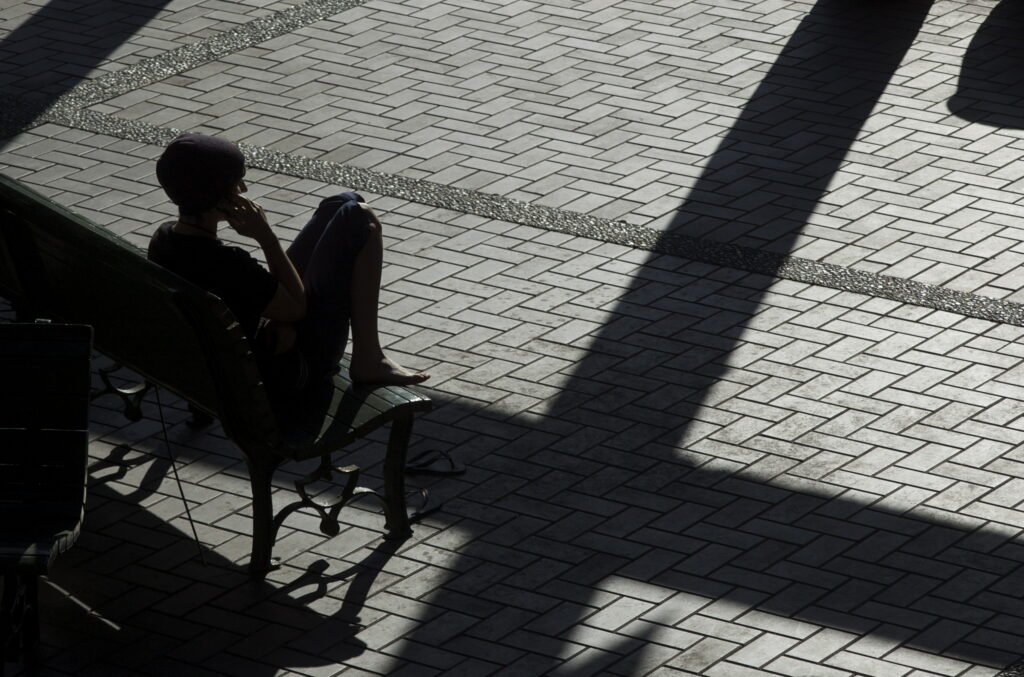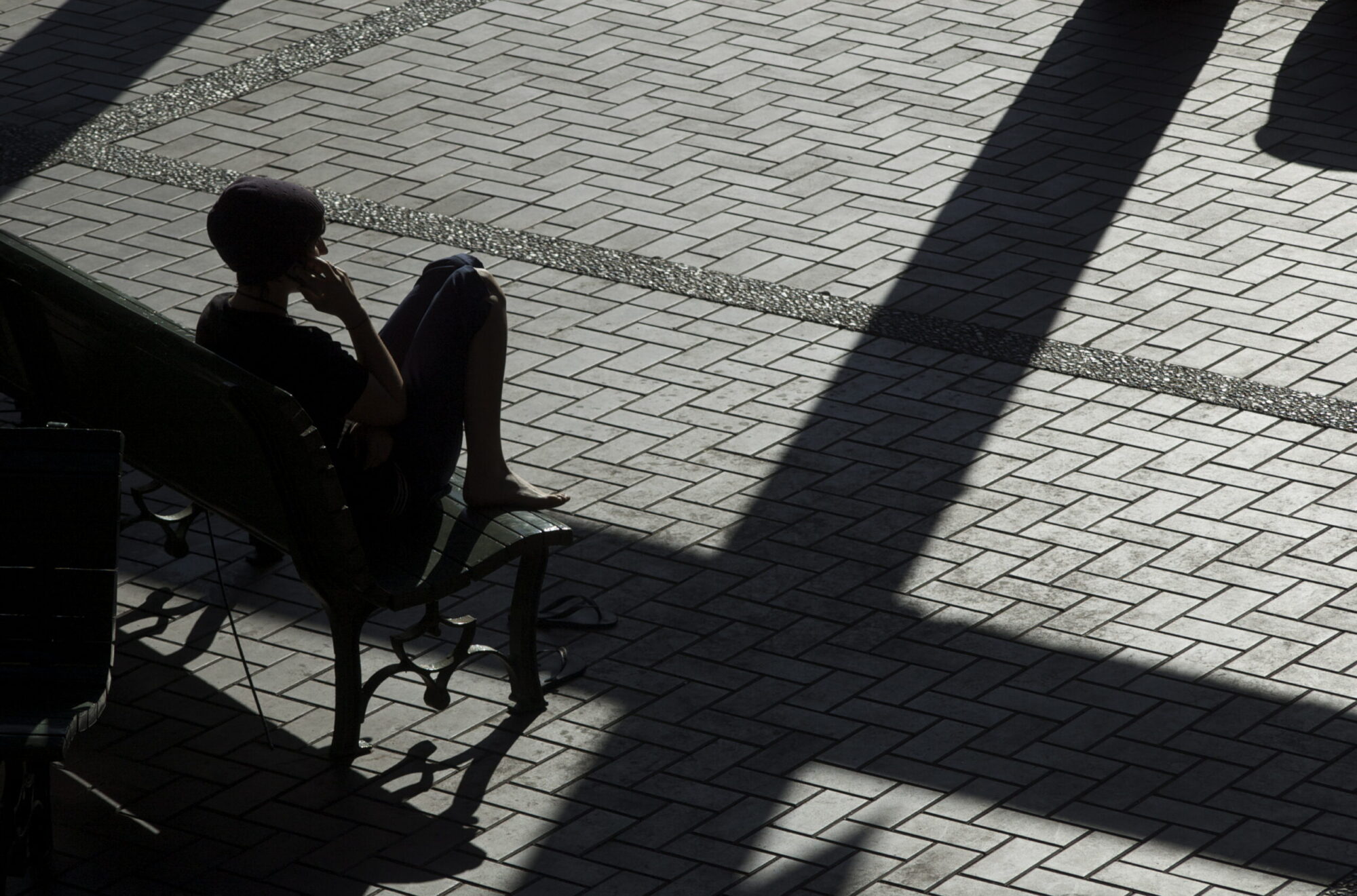1. Visual Analysis
This photograph is a masterclass in light, shadow, and human emotion, capturing an intimate yet anonymous moment of solitude. The subject—silhouetted and seated on a bench—stands in sharp contrast to the linear geometry of the paving stones and the imposing shadows cast across the ground.
- Composition: The image’s composition is strikingly balanced. The figure on the bench is positioned on the left third of the frame, leaving the expansive pavement and diagonal shadows to dominate the rest of the scene. The empty negative space emphasizes isolation.
- Light and Shadow: The photograph is defined by its dramatic interplay of light and shadow. The long, heavy shadows carve bold diagonal lines across the textured paving, framing the seated figure and adding visual weight. This stark contrast creates a high-contrast, almost graphic quality.
- Perspective: The high angle of the shot flattens the space, allowing the viewer to focus on the patterns of light, shadow, and texture. The bench and the figure’s curved form break the rigidity of the bricks’ linear arrangement.
- Texture: The brickwork creates an intricate grid-like pattern that contrasts with the organic, human shape of the figure. The texture adds rhythm and movement to an otherwise still scene.
- Color Palette: The muted grays and blacks dominate the image, accentuating its contemplative tone. The absence of vibrant color heightens the emotional resonance and reinforces the focus on light and shadow.
2. Symbolism and Reflection
This photograph is a meditation on solitude, contemplation, and the passing of time.
- The Figure in Shadow: The subject sits hunched and lost in thought, their face obscured by darkness. The shadow enveloping them represents introspection, anonymity, or perhaps the weight of isolation. They are physically present but emotionally distant, a silhouette in a sea of geometry.
- Lines and Isolation: The shadows create boundaries—bold and immovable. These divisions echo feelings of separation or entrapment, yet the space between the lines suggests movement or escape, should the figure choose to rise.
- Stillness and Time: The photograph freezes a fleeting moment. The long shadows imply the early morning or late afternoon, times associated with transition and reflection. Time seems to slow here, inviting viewers to pause and share the figure’s contemplative stillness.
- Humanity Amid Structure: The curved form of the figure softens the scene’s harsh geometric grid. The juxtaposition of the organic and the architectural symbolizes the tension between humans and the constructed spaces we inhabit.
3. Practical Photography Insights
This image showcases how to use light, shadow, and composition to elevate a simple scene into a powerful narrative.
- Leverage Light and Shadow: The directional light here creates strong, dramatic shadows that add depth and mood to the image. Look for hard light conditions to create bold lines and high-contrast compositions.
- Negative Space for Emphasis: The use of negative space—expansive, textured pavement—draws attention to the small but significant human element. Allowing room in the frame can enhance the emotional tone.
- High Angles for Pattern: Shooting from a high perspective flattens the scene and transforms the paving stones into a visual canvas. Use this approach to highlight textures and geometric patterns.
- Silhouettes for Ambiguity: Capturing the figure in shadow removes identifying details, making the subject universal. This anonymity invites viewers to project their own stories onto the image.
4. Reflections
In this photograph, light becomes the storyteller, and shadow becomes the silence that surrounds us. The figure sits alone, framed by diagonal lines that stretch endlessly toward an unseen horizon. Are they a symbol of introspection or loneliness? Do the shadows imprison or protect them? The answer lies in the viewer’s interpretation.
The paving stones, rigid and unyielding, seem to echo the structure of our lives—planned, ordered, predictable. And yet, the figure’s stillness disrupts this structure, a reminder that in our moments of pause, we create space for thought, for feeling, for being.
The play of light suggests impermanence. Shadows lengthen, change, and disappear. In this frozen instant, the figure’s quiet presence exists only in this light, this shadow, this time.

